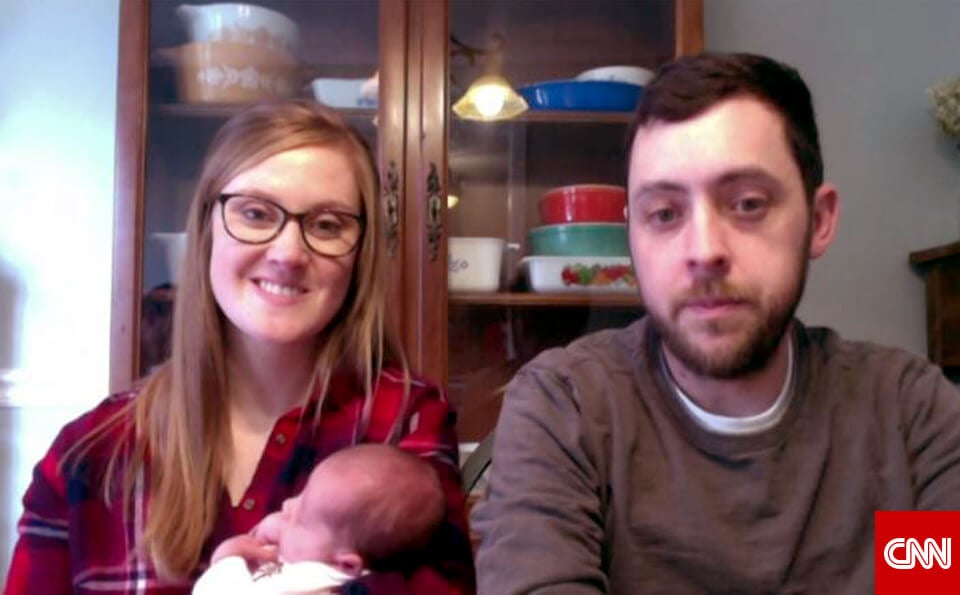
Frozen Embryo Results in a Successful Birth after 24 Years
A 20-year-old frozen embryo was the previous oldest known embryo leading to a successful birth. However, it is not possible to confirm the oldest embryos with any certainty. That's because American companies aren't required to report the age of embryos, only the outcome of the pregnancies.1
Choosing the donor.
Before considering embryo adoption, Tina and Benjamin Gibson had fostered several children and were thinking about adoption. When they decided to pursue embryo adoption, they unknowingly chose the record-breaking embryo after reviewing profiles from among a group of 300 donors. Given that they are both physically small, the Gibsons narrowed their search by first reviewing profiles based on height and weight, and then on medical history.
Thawing and transferring embryos.
After the Gibsons settled on a choice, the embryology lab director at the National Embryo Donation Center thawed 3 frozen embryos from the same anonymous donor. All 3 embryos survived thawing—beating the statistical odds, which is a 75 percent survival rate for embryos frozen using the old freezing technique (see below).
How cryopreservation has changed. Although these embryos were cryopreserved using a slow-freeze method, today many labs use an ultra-rapid cooling technique (vitrification) that works well for embryos and was a big improvement for eggs, due to their delicacy. Vitrification prevents formation of ice crystals, helping cells to survive the freezing process. Starting in 2006, Pacific Fertility Center (PFC) was an early adopter of this technology.
A successful birth.
Only 1 of the 3 embryos transferred to Tina implanted. This is normal, given an average implantation rate of 25 to 30 percent. At birth, Emma was delivered by Jeffrey Kennan, MD, medical director of the National Embryo Donation Center, a faith-based organization founded in 2003 in Knoxville, TN. Two remaining embryos the Gibsons adopted from the same donor give them the option of trying for a biological sibling to Emma.
When couples donate embryos.
How often are additional embryos available after attempting or achieving successful in vitro fertilization (IVF)? This occurs only about 15 to 20 percent of the time nationally considering all clinics and all patients. However, younger patients typically can produce multiple embryos from 1 IVF cycle.
When extra embryos are available after IVF, biological parents have several options:
- Have the embryos appropriately disposed of
- Leave the embryos cryopreserved in liquid nitrogen storage tanks
- Donate them to research or for training in the field of reproductive medicine
- Donate them to another couple
Couples may be less likely to choose donation to another couple, in part, because the process requires additional legal documentation, screening, and steps for meeting U.S. Food and Drug Administration (FDA) donor eligibility regulations. For the Gibsons and others like them, however, another couple's decision to donate unused embryos has no doubt made all the difference in the world.
Source
CNN: "The embryo is just a year younger than the mother who birthed her." Available at: http://www.cnn.com/2017/12/19/health/snowbaby-oldest-embryo-bn/index.html Accessed 1-29-18.
Categories
About the Blog
Welcome to the Pacific Fertility Center Blog! Nationally and internationally recognized for providing exceptional reproductive care, our team believes in empowering people with the knowledge they need to navigate their unique fertility journeys.
From information on the latest fertility treatments to valuable insights on egg donation, surrogacy, and everything in between, the Pacific Fertility Center Blog is your ultimate resource for all things reproductive care and support. Read on to learn more, and contact us today if you have any questions or want to schedule a new patient appointment.

